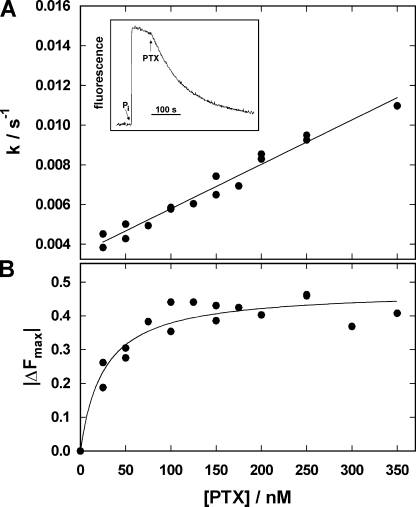Figure 7.
Modification of the Na,K-ATPase by PTX under the condition of backdoor phosphorylation. When 0.5 mM inorganic phosphate (Pi) is added to the Na,K-ATPase in the absence of Na+ and K+ ions, the following reaction sequence is triggered: (H2E1→)E2(H2)→P-E2H2→P-E2 (Apell and Diller, 2002), and the dissociation of the two protons leads to an increase of the RH421 fluorescence as shown in the inset of A. Addition of 100 nM PTX produced an exponential decay of the fluorescence intensity whose rate constant, k, and fluorescence amplitude, ΔFmax, was determined. When plotted as function of the applied PTX concentration (A), a linear dependence of k on PTX concentration was found from which k bind = 0.22 × 105 M−1s−1 and k diss = 35 × 10−4 s−1 were determined. (B) The concentration dependence of ΔFmax could be fitted by a binding isotherm with a half-saturating binding concentration of K m = 25.8 nM.

